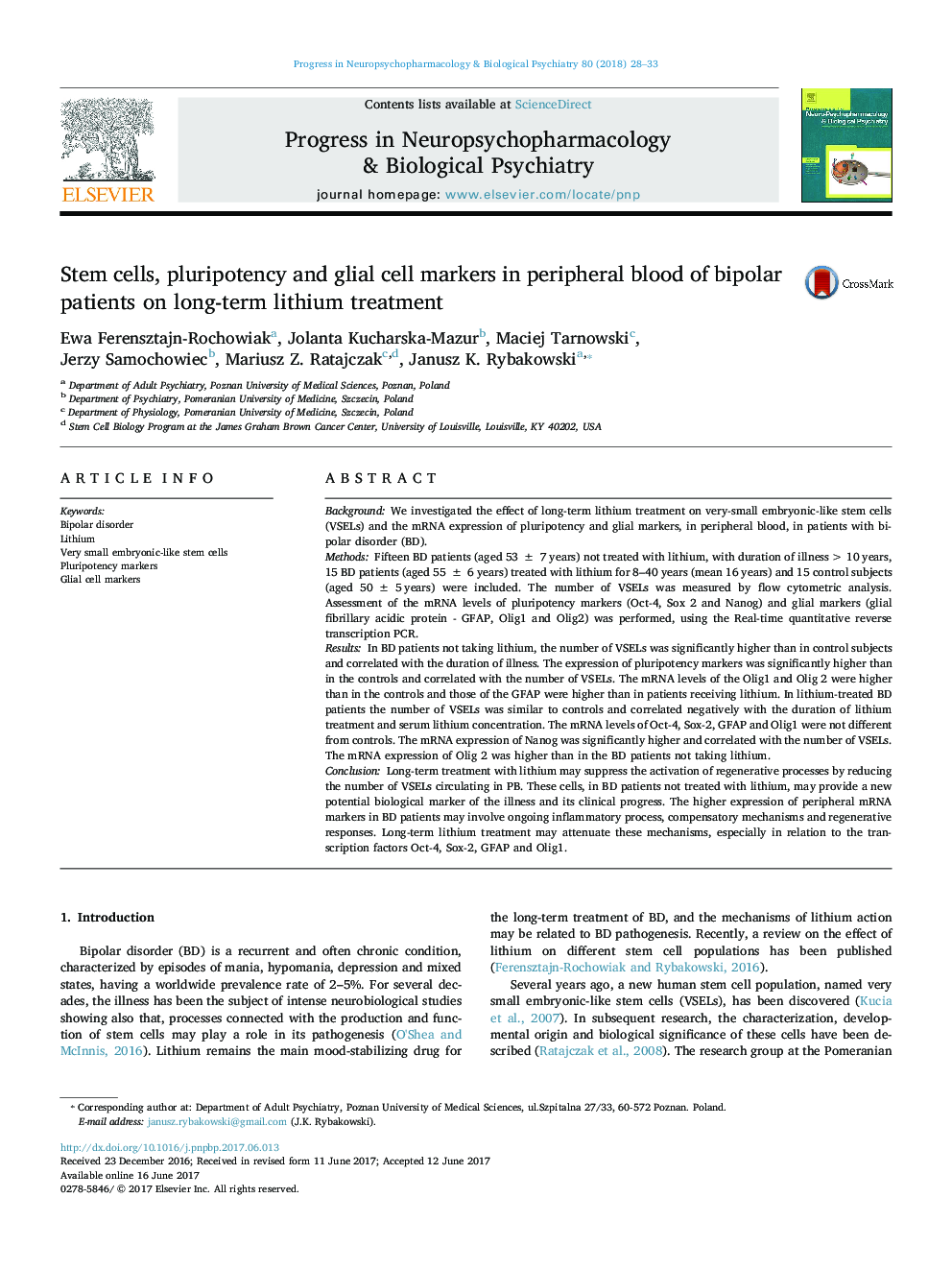| کد مقاله | کد نشریه | سال انتشار | مقاله انگلیسی | نسخه تمام متن |
|---|---|---|---|---|
| 5557963 | 1403192 | 2018 | 6 صفحه PDF | دانلود رایگان |
- Very small embryonic-like stem cells, pluripotency and glial cell markers studied.
- Data from bipolar patients (BD) treated or not treated with lithium and controls.
- BD Li (â) had higher VSELs number and mRNA of most markers than controls.
- BD Li (+) had VSELs number and mRNA of most markers similar to controls.
- Lithium may normalize overactive inflammatory and regenerative processes in BD.
BackgroundWe investigated the effect of long-term lithium treatment on very-small embryonic-like stem cells (VSELs) and the mRNA expression of pluripotency and glial markers, in peripheral blood, in patients with bipolar disorder (BD).MethodsFifteen BD patients (aged 53 ± 7 years) not treated with lithium, with duration of illness > 10 years, 15 BD patients (aged 55 ± 6 years) treated with lithium for 8-40 years (mean 16 years) and 15 control subjects (aged 50 ± 5 years) were included. The number of VSELs was measured by flow cytometric analysis. Assessment of the mRNA levels of pluripotency markers (Oct-4, Sox 2 and Nanog) and glial markers (glial fibrillary acidic protein - GFAP, Olig1 and Olig2) was performed, using the Real-time quantitative reverse transcription PCR.ResultsIn BD patients not taking lithium, the number of VSELs was significantly higher than in control subjects and correlated with the duration of illness. The expression of pluripotency markers was significantly higher than in the controls and correlated with the number of VSELs. The mRNA levels of the Olig1 and Olig 2 were higher than in the controls and those of the GFAP were higher than in patients receiving lithium. In lithium-treated BD patients the number of VSELs was similar to controls and correlated negatively with the duration of lithium treatment and serum lithium concentration. The mRNA levels of Oct-4, Sox-2, GFAP and Olig1 were not different from controls. The mRNA expression of Nanog was significantly higher and correlated with the number of VSELs. The mRNA expression of Olig 2 was higher than in the BD patients not taking lithium.ConclusionLong-term treatment with lithium may suppress the activation of regenerative processes by reducing the number of VSELs circulating in PB. These cells, in BD patients not treated with lithium, may provide a new potential biological marker of the illness and its clinical progress. The higher expression of peripheral mRNA markers in BD patients may involve ongoing inflammatory process, compensatory mechanisms and regenerative responses. Long-term lithium treatment may attenuate these mechanisms, especially in relation to the transcription factors Oct-4, Sox-2, GFAP and Olig1.
Journal: Progress in Neuro-Psychopharmacology and Biological Psychiatry - Volume 80, Part A, 3 January 2018, Pages 28-33
